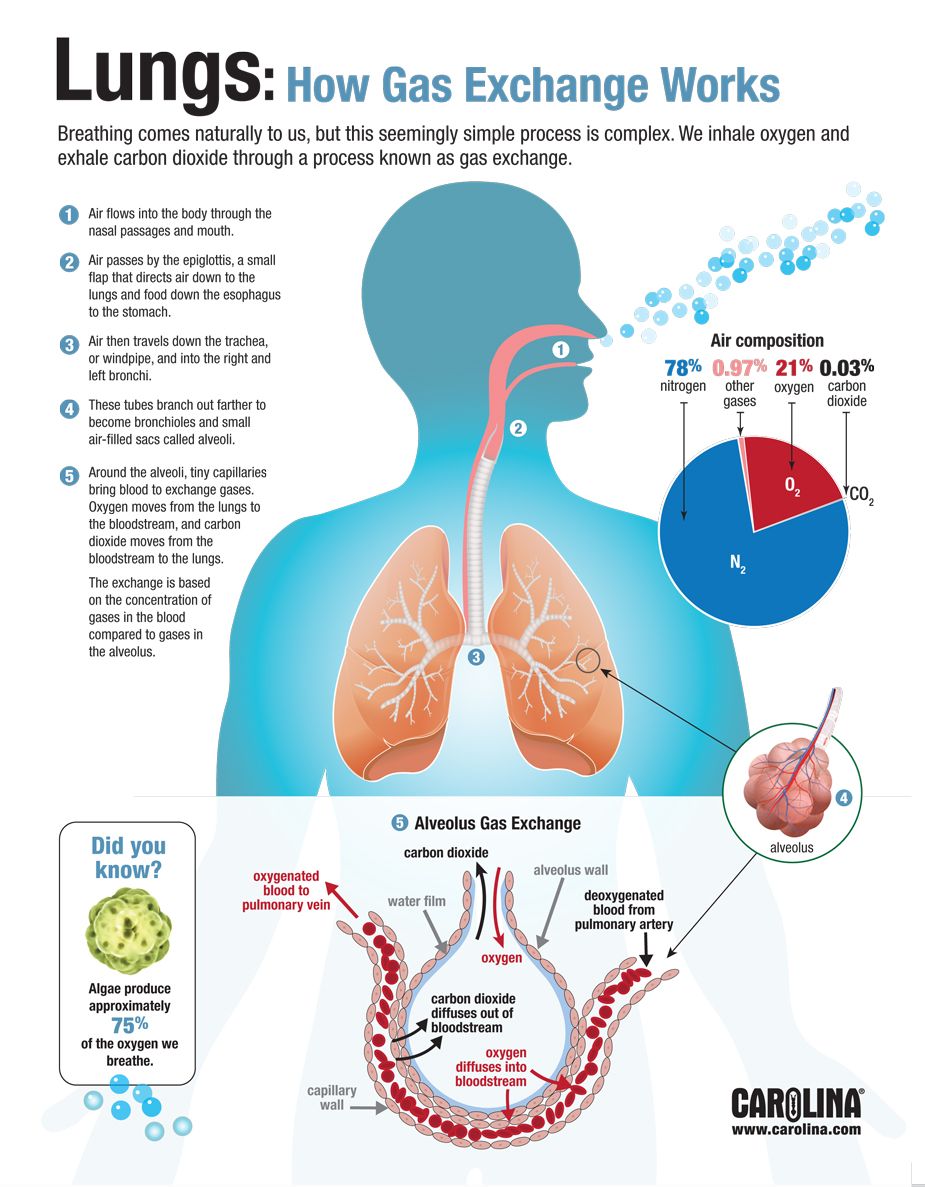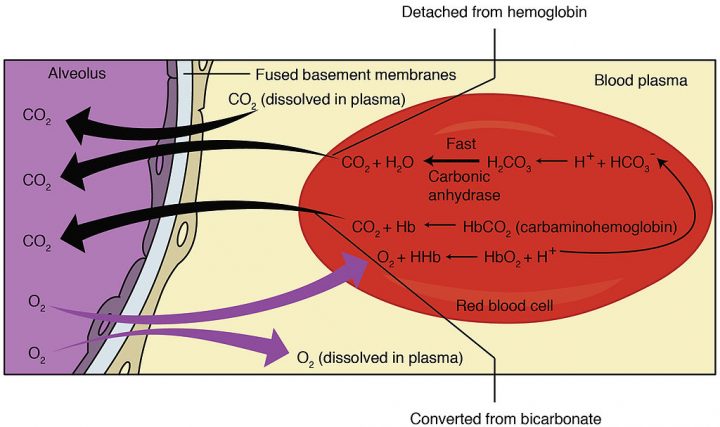

When the partial pressure of carbon dioxide is the low and partial pressure of oxygen is high, it leads to dissociation of carbon dioxide from carbamino-haemoglobin, which mean the carbon dioxide which is attached to haemoglobin from the tissue is transported at the alveoli.The partial pressure of carbon dioxide works in the binding.Carbon dioxide is carried by haemoglobin in the form of carbamino-haemoglobin (20-25%).Around 5m of oxygen is delivered to tissue in every 100 ml of oxygenated blood under normal physiological conditions.This signifies that oxygen gets attached to haemoglobin in the lung and gets dissociated in the tissues. Alveoli region has high pO 2, low pCO 2 low temperature and lesser hydrogen ion concentration, which favours the dissociation of oxygen from the oxyhaemoglobin.This curve is very useful in studying the effect of factors like hydrogen ion concentration, partial pressure of carbon dioxide on the binding of oxygen with haemoglobin.The curve is known as the Oxygen dissociation curve. When the percentage saturation of haemoglobin with oxygen is plotted on a graph against the pO 2, it gives a sigmoid curve.Partial pressure created by carbon dioxide, temperature and hydrogen ion are some other factors that can interfere with this binding.All the haemoglobin molecules have the capacity to carry four molecules of oxygen.Oxygen can attach with haemoglobin in a reversible reaction to form oxyhaemoglobin. Haemoglobin is red in colour due to the presence of iron in it and makes our blood look red in colour.Around 7% of carbon dioxide is carried in a soluble state through plasma. About 20-25% of carbon dioxide is transported by red blood cells whereas 70 percent of it is carried in the form of bicarbonate. The remaining 3% of oxygen is carried in a soluble state through plasma. About 97 percent of oxygen is transported by red blood cells in the blood. Transport of oxygen and carbon dioxide occurs in the blood. The diffusion membrane consists of three major layers:Īll the factors in our body are favourable for the diffusion of oxygen from alveoli to tissue and that of carbon dioxide from the tissue to alveoli. The solubility of carbon dioxide is 20-25 times higher than that of oxygen, the amount of carbon dioxide that can diffuse through the membrane per unit difference in partial pressure is very high in comparison to that of oxygen. The diagram shows the partial pressures of the two gases in the atmosphere and the sites of diffusion.Ī pressure gradient also occurs for carbon dioxide in the opposite direction, i.e., from blood to alveoli and tissues to blood.

Two important factors that influence the rate of diffusion are: Carbon dioxide and oxygen are exchanged in these site by simple diffusion on the basis of pressure or concentration gradients. The gases are exchanged between tissues and blood. The main site of exchange of gases is alveoli.


 0 kommentar(er)
0 kommentar(er)
